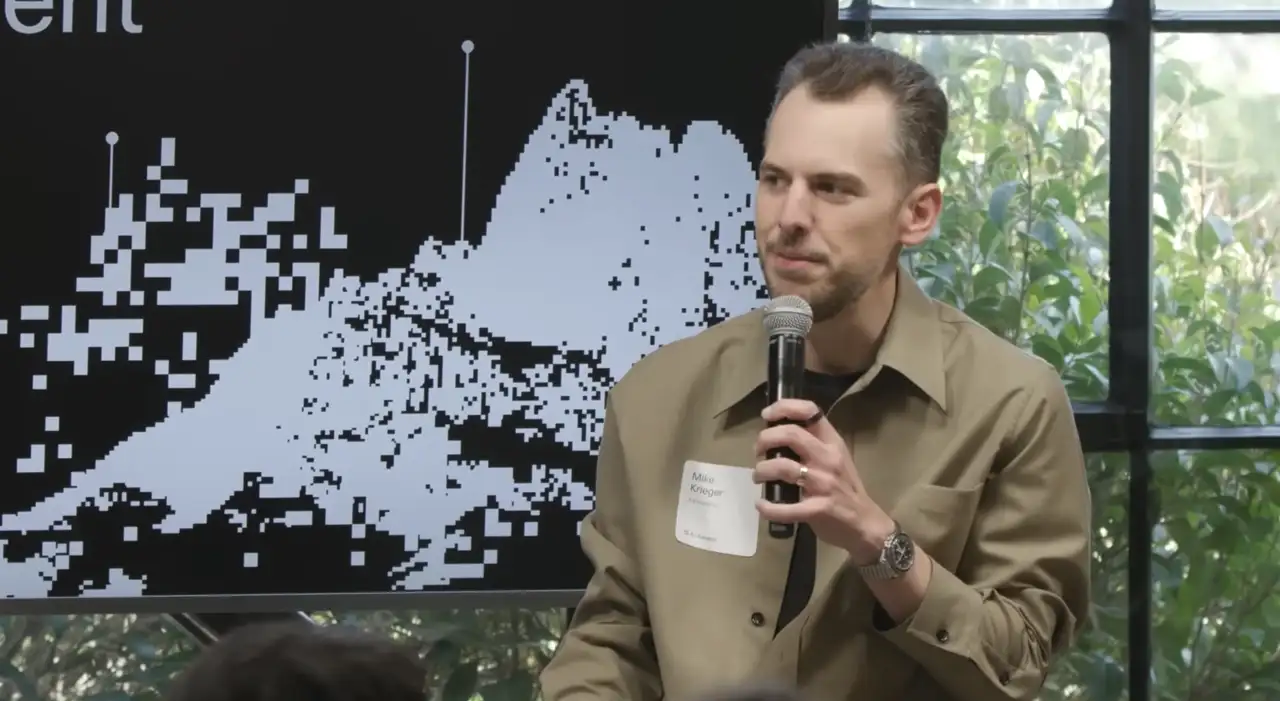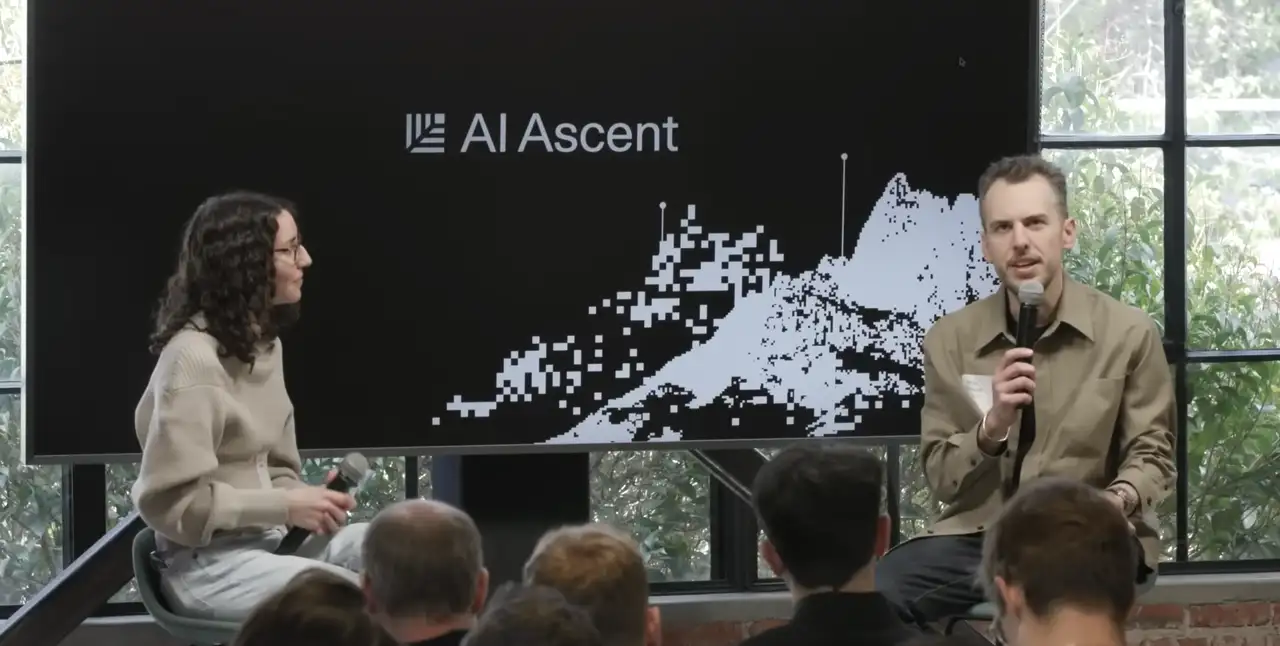The Secret Sauce at Anthropic? CPO Mike Krieger Says: Stop Bossing!

Vivi Carter · 19, July 2025
(Here’s How Artifact & MCP Really Got Built)
"The question won’t be ‘Was this AI-made?’ but ‘Do you trust its source?’""Compute allocation is AI’s ultimate strategic choice—every joule powers either research breakthroughs or customer value."
"After coding with Copilot, working offline feels like being an engineer with amputated limbs."
"AI’s biggest UX challenge: First-time use must feel as intuitive as snapping your first Instagram photo."
"Agent economies hinge on trust, not protocols—when should your digital twin share your credit card?"

At Sequoia’s 2025 AI Ascent, Anthropic CPO Mike Krieger unpacked why AI product development demands bottom-up agility. Beyond empowering meme-happy engineers, he revealed how Anthropic strategically allocates compute between research and products while sharing hard truths: 70% of their internal output is AI-generated, and onboarding new users remains a "nightmare" UX gap.
Key Takeaways
1️⃣ Bottom-Up Innovation
- AI Products ≠ Traditional Roadmaps: Krieger contrasted Instagram’s "plan-then-ship" cycles with Anthropic’s fluid approach: "You must embrace chaos. The best products emerge with the model—you often don’t know its limits until late."
- Case Study: Artifact: Started as a research prototype, then evolved into a product when designers/engineers organically adopted it.
2️⃣ The New Content Paradigm
- Beyond Watermarks: "As AI generates most content, ‘AI-made?’ becomes irrelevant. What matters: provenance, citations, and traceability." Krieger noted blockchain could help, "though it’s unfashionable to admit" (IEEE Spectrum, 2024).
- Human Connection Wins: "AI is just another storytelling tool—it still needs emotional resonance."
3️⃣ Coding’s Productivity Paradox
- Reality Check: Claude writes >70% of Anthropic’s code, but humans still lead architecture/oversight.
- Second-Order Effects: "Faster coding exposes organizational drag. A 1-hour meeting now wastes 4-8 hours of AI-amplified output." Junior devs output more code but need stronger systems thinking.
4️⃣ Strategic Tradeoffs
- Compute as Currency: "Every watt diverted to customer products is a watt denied to pure research." Krieger acknowledged tension between OpenAI’s commercialization and SSI’s pure-research model.
- Learning from Competitors: "We’re exploring dedicated product models like ChatGPT’s API—it unlocks differentiated experiences."
5️⃣ Agent Economy Frontiers
- Autonomy > Protocols: "The goal: agents working hours autonomously using memory/tools. But today’s big gap? Trust architecture."
- Uncharted Economics: "How do agents ‘hire’ other agents? How do we audit them?" Krieger highlighted unresolved privacy/identity risks.
Full Session Highlights
Lauren (Host): You’re known as an AI media pioneer. Where’s AI content headed?
Mike Krieger: It always circles back to story. AI’s just another tool—what matters is whether characters or emotions resonate.
Lauren: How do you give users control over AI systems?
Krieger: Watermarks feel temporary. Future focus is traceability—like verifying sources or citations. Blockchain could help, but honestly? We’ve rebuilt the web’s citation problem.
Lauren: What’s your product philosophy at Anthropic?
Krieger: Instagram-era principles still apply: solve real problems. But I had to unlearn top-down planning. At Anthropic, you must let teams tinker—it’s how MCP was born.
MCP Origin Story: "Two engineers noticed messy integrations for GitHub/Google Drive. They prototyped a unified protocol—not because leadership demanded it, but because they hated redundancy. Now it’s becoming an open standard."
Lauren: How do you scale these organic ideas?
Krieger: For MCP, I’m excited about:
- Action-taking (beyond retrieving data)
- Agent-to-agent interaction standards (Google’s exploring this too)
Lauren: Why focus heavily on coding tools?
Krieger: Even here, breakthroughs came from researchers pushing RL boundaries. We obsess over whether code is usable—not just benchmark scores. But beware ‘vibe coding’: AI won’t design your architecture… yet.
On Productivity Shifts: "Copilot’s speed makes organizational inefficiencies scream. If your meeting blocks 4 hours of AI output, that pain is visceral."
Lauren: What Anthropic experiments should we steal?
Krieger: Shared visibility tools. Our Slack-Claude integration normalizes AI use—people openly say ‘Claude drafted this, saving me 2 hours.’ New hires expect this frictionlessly."
Lauren: What’s next for Anthropic?
Krieger: Agents working over hours/days—not seconds. That requires memory, tool mastery, and organizational awareness. We’ll enable this through models + infrastructure... and yes, new models are coming."

Audience Q&A
Q: What keeps you up at night?
Krieger: First-time UX. We’re miles from Instagram’s ‘open-and-click’ simplicity. If you don’t know the magic prompts, AI still feels broken.
Q: Thoughts on AI’s compute-dominated future?
Krieger: Compute allocation is existential. Every lab debates: ‘Do we deploy resources for RLHF, customers, or training?’ We’ll see who balances it best—OpenAI, SSI, or us.
Q: How do you balance research vs. product?
Krieger: If our products just wrap an API, why exist? We push for dedicated product models (like OpenAI’s ChatGPT API)—they create unique value.
Q: Will AI services bundle like cable TV?
Krieger: [Laughs] Probably. We see users pay for WindSurf and Claude today. Bundling tokens across products might emerge—imagine your $200 Claude sub working in other apps.
Q: What do most builders get wrong?
Krieger: Bolting AI onto old GUIs. True ‘AI-native’ means redesigning your app for agents—not confining them to sidebars. If your AI says ‘I can’t do that, Dave,’ you’ve failed."
